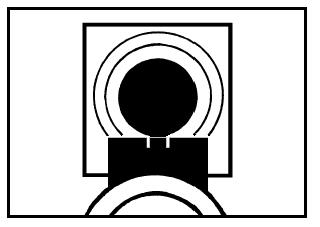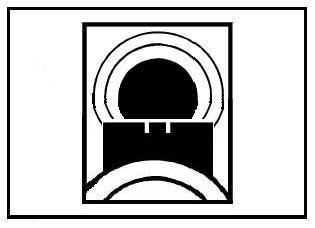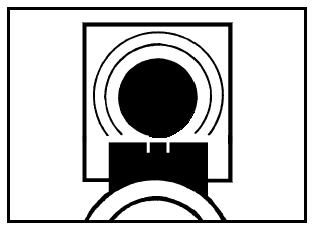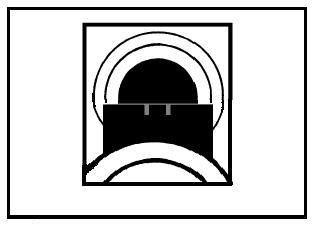| Jul05: addendum by BullsEye
http://www.MarkII.org/forum/index.php?showtopic=3212 |
|---|
|
jambiex Posted: Jul 31 2005, 03:14 AM Expert Group: Members Posts: 119 Member No: 2011 Joined: 05Apr2005 Was just reading Nygord's notes (www.Nygord-Precision.com) on the ideal sight picture. I have been using the 6 o'clock hold and I must say that I tend to agree with him. He states that trying to place the bullseye tangent to the front sight produces too much strain on the shooter. He recommends a sub 6 o'clock hold. I think I will try it out next time I go to the range. He also mentions a center hold, where the front sight bisects the bullseye. Perhaps the experienced shooter on this board could pipe in and tell us which sight picture they use and why. I think, we the less experienced shooters could gain much from such info.
Bullseye Posted: Jul 31 2005, 08:52 AM MarkII Expert Group: Moderator Posts: 828 Member No: 17 Joined: 07Apr2003 A tangent 6 o'clock hold is very difficult for a beginning shooter to hold both mentally and physically. First, anyone can agree that newer shooters have less than steady aiming tendencies although they have a strong desire to hold a "perfect sight picture." The combination of these two factors leads to surges in adrenaline in the body and the overpowering need to jerk the trigger the instant the sight wavers into the perceived near perfect position. Jerking the trigger instantaneously destroys all prior sight alignment work in the last few precious milliseconds before cartridge detonation. Here's how the Tangent Sight picture appears.
There are other problems with a tangental hold and these deal with the properties of light refraction. Light rays tend to bend around objects, so a tangent hold can be opically deceiving to the shooter. While the sight blade appears perfectly placed the light rays bending around it have really distorted where the target actually is positioned downrange. This effect is know as shooting a "flat tire." The black ball has distorted and now appears like it has a flat spot underneath it near the front sight. The resulting shots will be erratic on the target and can have a tendency to drift high in or above the aiming black. Here's how a Flat Tire Sight picture appears.
A sub 6 o'clock hold is prefferred because light will not refract around the top of front blade when the sight is held a little lower on the aiming black. Service Rifle shooters use this method all the time where long distance is another added factor to contend with in competition. The sub 6 o'clock aiming technique is also known as holding a "line of white." Actually the shooter holds just below the black ball and has a thin white line just above the sight blade and below the black ball. The aiming black does not distort with this style and the shots tend to cluster in the appropriate area on the target. The new shooter isn't attempting to hold perfect sight placement and therefore has less of a tendency to jerk the trigger. A shooter must be consistent with his line of white but not obsessive about it, this is very important, because the shooter will sooner or later realize that sight placement is not as important as sight alignment. In other words, there's a lot of wiggle room on the target and where the sights are isn't all that important as long as they're close. However, making sure that the front and rear sights are in alignment is critical because any offset here and an angular error is induced into the shot. Any angular irregularities in sight alignment and shots will appear normal to the shooter optically but the hits will be way off of his calls. That kind of situation injects frustration and strong emotions into the shooter's performance and a rapid decline in mental attitude occurs, causing even more negative emotional responses. The shooter cannot figure out why the shots are errant because they appeared to him as having been aimed correctly. Here's how the Line of White Sight picture appears.
The center hold can be an effective hold style for a new shooter. Here the front sight is held dead center of the aiming black. All a shooter has to do is maintain alignment, hold the blade in the black, and if the shot breaks correctly, the hits will be in the black. The problem is, as the shooter's skills progress, hits just being in the black won't be good enough for consistent scores, the hits will be all over the black and not consistent. But before I get into the negatives there are a few more positives to this style of hold. A shooter can mostly concentrate on his/her trigger techniqes instead of sight placement - an area where most of the shooter's concentration should be focused. Remember, no matter how perfect the sight alignment or hold is, an improperly executed trigger technique negates it all in the last few moments before the shot breaks. Here's how the Center Hold Sight picture appears.
The center hold can be a difficult technique for a new shooter too. Optically, it is a lot more difficult to keep the front and rear sights aligned when the white area of the target isn't showing though in between the two sights. In the heat of sustained fire, not having two clear white lines in between the sights can cause the shooter to lose sight focus or get the blade and notch out of alignment. When this situation happens, the calls are way off and the shooter can even start looking downrange at the target instead of the sights were he/she should be looking. OK, now for the real deal. It doesn't matter much on which technique a shooter uses, just pick one and be consistent with it. Make only minor changes to your shooting style techniques and then very carefully evaluate the results. Build yourself into a set routine and don't stray from it. A shooter who does one thing one day and another the next, is not being consistent in anything except being inconsistent. These things develop over time, it won't happen ovenight. As your shooting skills and physical abilities increase, the performance level results will ascend like a set of stairs. Scores will jump a little then level off, then improve a nother notch and level off again. And be prepared for some setbacks as one tends to regress back to old poor habits from time to time. Most importantly, don't ever get frustrated, because then you're not concentrating on your shooting techniques with 100% of your focus. Anything less than 100% mental focus and performance will decline significantly. Shooting is very much like a martial art, the results come from executing the techniques perfectly, the means cause the results and not the other way around. Oh, and never forget to go out and have some fun.
First, all shooters should track their scores and performance. I personally have scores plotted all the way back to the early eighties. I keep a scorebook and record all the daily particulars like: ammo lot, temp., grain/type powder for reloaded ammo, wind direction/speed, light direction, string scores, etc. Not all of these data points apply in each circumstance, like if one is shooting indoors. Temperature is a major factor and can play a significant role in a shooter's overall performance indoors or out. When the mercury dips below 40 f. then firearms tend to have malfunctions from lubrication getting sluggish. Above 80 f. and perspiration can effect a shooter's grip and vision. Later, I take my scores from the scorebook and plot the strings or type firearm on a Microsoft Excel spreadsheet. (Not everyone would find this necessary but I can do an at a glance trend analysis on my performance and my equipment over long time periods.) Next I'll discuss setting up a shooting position. In order to have consistent shot placement one has to reduce muscle positioning and rely on natural body position, or what is known as NPA (Natural Point of Aim.) Here a shooter uses his/her own body structure to find a natural center for bone positioning. People's body types and bone structures are different, so a position that works for one person won't necessarily work for another. Arm length, leg legnth, trunk structure, all will have a different effect on one's natural body positioning. There are also some people who have had an accident or some natural difficulty which requires them to compensate or adapt their natural positon to maintain a good shooting stance. In any case, a shooter wants to reduce muscle use to a minimum. Muscles tend to fatigue and when they do they begin to tremble. Trembling, especially in the forearm can have a significantly negative impact on performance. To set up a NPA stance a shooter must relax. Position the feet so the body is lightly turned, approx. 45 degrees towards the target, feet very slightly canted outwards for stability. Raise the shooting arm so the sights are on the target. Next is one of the most important steps - close your eyes and visualize the target in your mind. Relax and even pivot back and forth on you hips slightly, all while your eyes are closed. This way when your body centers back into position, you're at your natural center and not holding the pistol's sights on the target using muscle positioning in your hips and back. Because when your shooting, your muscles will relax as you concentrate on the sights and you will tend drift back to your natural center point. If that center is not aligned with the target, then you'll be fighting to keep the sights in the center of the target and fatigue yourself. If you find that when you relaxed, center your position and opened your eyes that the pistol's sights are not aligned on the target, then adjust one foot's position so the sights are aligned on the target. Next, close your eyes and do everything again until you can open them and find your pistol is on target all by itself. After you've established this position, don't move your feet! If you do, then you'll upset your NPA. Very important, I see people shuffling their feet all the time to glance in their scope or adjusting their equipment - this is bad. Sometimes people will bring a little piece of chalk an trace out their foot placement once they've established their NPA. In any case, set up your shooting equipment to compliment your NPA position not ruin it. Here is where establishing a routine comes into play, have everything laid out as you need it, ready to go. Once you get set into position, don't move around. Before each string when I'm about to start, I'll close my eyes and relax, when I open them I'll be on target and ready to go. All in all, it comes back to what I said before, find what works for you and only vary it slightly. Otherwise it is impossible to analyze the impact of the change, because there's more than one variable to examine. Hope this helps.
|



